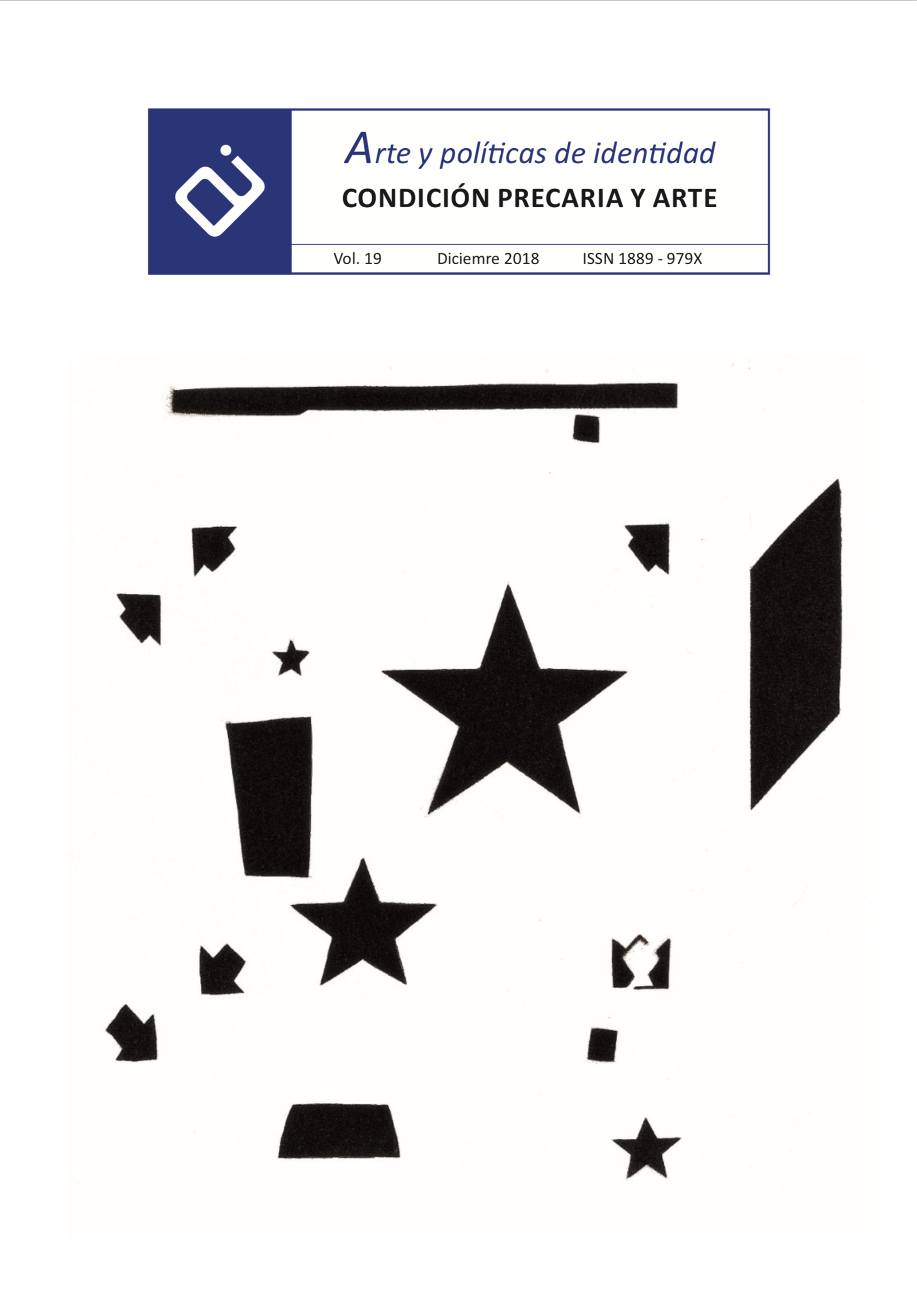Connections among the term precariousness and the aesthetic notions of visuality, relationality and liminality
Abstract
In recent times, the term precariousness has acquired a notorious centrality in innumerable discursive circuits, one of them being contemporary art. Thus, certain artistic practices and, as a consequence, particular dialectic processes that approach them, propose both formal devices and conceptual strategies to address and question the phenomenon of precariousness. In this text, we critically analyze some of the ideas raised regarding the issue of precariousness in contemporary art, more specifically linked to the notions of visuality (Ross, 2008), relationality (Bourriaud, 2009) and liminality (Van Gennep, 2008). Thereby, we principally examine how these three theoretical perspectives bind the artistic and the ethical-political aspects of art making together, to pinpoint those propositions that get closer to an idea of equilibrium in the ethical-aesthetical productivity of precariousness (Gielen, 2015). We find that whereas in the conceptions linked to visuality and relationality the purely aesthetical aspects prevail in relation to the ethical-political ones, liminality radically questions any systemic and hierarchic consensus of social institutions, due to its anti-structural character (Diéguez, 2009).
Downloads
-
Abstract479
-
PDF (Español (España))465
References
Bishop, C. (2006). The social turn: collaboration and its discontents. Artforum, 44(6), 178-183.
Bürger, P. (1984). Theory of the Avant-Garde (M. Shaw, trad.). Minneapolis, USA: University of Minnesota Press. Recuperado de https://monoskop.org/images/d/d0/Buerger_Peter_The_Theory_of_the_Avant-Garde.pdf
Bourriaud, N. (2009). Precarious constructions. Answer to Jacques Rancière on art and politics En A precarious existence. Vulnerability in the public domain. Open! Platform for Art, Culture & the Public Domain, 17. Recuperado de https://onlineopen.org/download.php?id=240
Butler, J. (1991). Gender trouble: feminism and the subversion of identity. New York, USA y Londres, Reino Unido: Routledge.
Butler, J. (2004). Precarious lifes: the powers of mourning and violence. Nueva York, USA y Londres, Reino Unido: Verso.
Butler, J. (2009). Frames of war: When is life grievable?. Nueva York, USA y Londres, Reino Unido: Verso.
Diéguez, I. (2009). Escenarios y teatralidades liminales. Prácticas artísticas y socioestéticas. Archivo virtual artes escénicas. Recuperado de https://inquietando.wordpress.com/textos-2/escenarios-y-teatralidades-liminales-prácticas-artísticas-y-socioestéticas
Gielen, P. (2015). The murmuring of the artistic multitude. Global art, politics and post-fordism (3ª ed.). Amsterdam, Netherlands: Valiz.
Nogués-Pedregal, A.N. (2002). El ritual como proceso. En VV. AA., Youths. Red de apoyo para la prevención de la violencia en el medio escolar (pp. 221-229).Alicante, España: Excma. Diputación de Alicante – Programa Hipokkrat. Recuperado de http://www.dip-alicante.es/hipokrates/hipokrates_I/pdf/ESP/435e.pdf
Rancière, J. (2004). Malaisie dans l’esthétique. París, Francia: Èditions Galilée.
Rancière, J. (2008). Le spectateur émancipé. París, Francia: La Fabrique.
Ross, C. (2008). Introduction: the precarious visualities of contemporary art and visual culture En O. Asselin, J. Lamoureux y C. Ross, (eds.), Precarious visualities. New perspectives on identification in contemporary art and visual culture. Montreal y Kingston, Canadá, London, UK, Ithaca, USA: McGill-Queen’s University Press. Recuperado de: https://books.google.es/books?id=P8nRyZ6VoC4C&pg=PT14&hl=es&source=gbs_toc_r&cad=3#v=onepage&q&f=false
Schaeffer, J.M. (1987). L’image précaire, Paris, Francia: Le Seuil.Turner. V. (1980). La selva de los símbolos: aspectos del ritual ndembu (A. Cardín y R. Valdés Del Toro, trad.). Madrid, España: Siglo XXI.
Van Gennep, A. (2008). Los ritos de paso (J.R. Aranzadi, trad.). Madrid, España: Alianza Editorial.
Works published in this journal are subject to the following terms:
- The Service of Publications from the University of Murcia (publishing house) keeps the published works’ copyrights, and favors and allows the reuse of these works under the license indicated in point 2.
- Works are published in the journal’s online edition under the license Creative Commons Reconocimiento-NoComercial-SinObraDerivada 3.0 España(texto legal). They can be copied, used, disseminated, transmitted and publicly exhibited, as long as: i) the author and original source of publication are cited (journal, publishing house and work’s URL); ii) they are not used for commercial purposes; iii) the existence and specifications of this license are mentioned.
3. Conditions for auto-file. It is allowed and encouraged that authors share electronically their pre-print version (the pre-reviewed version) and /or post-print version (the reviewed and accepted version) of their Works before the publication, since it promotes its circulation and dissemination. RoMEO color: green.










